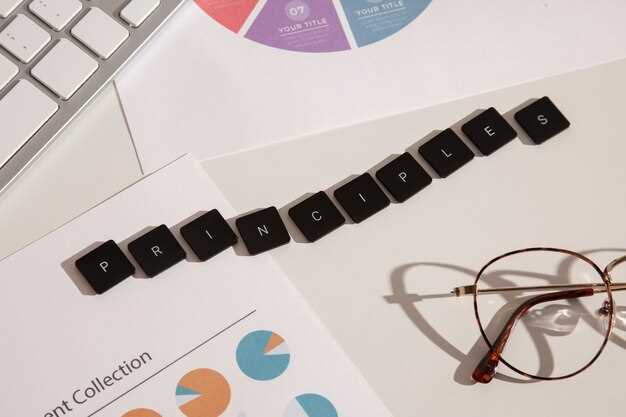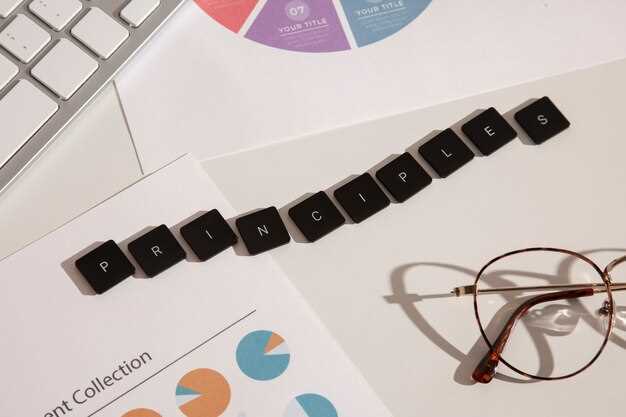Invest in the value of A/B testing on headlines. Headlines are the first encounter readers have with your content, and a captivating headline can boost conversion rates by as much as 150%. Prioritize clarity over cleverness, ensuring the headline conveys the key message or benefit swiftly. Test variations to discover which resonates best with your audience.
Craft meaningful calls-to-action (CTAs) with precision. A well-written CTA that blends naturally with your content can increase conversion by 202%. Use actionable verbs and create an immediate need to respond. Phrases like “Discover your savings now” or “Get your free quote” often yield better results than generic alternatives.
Utilize social proof effectively. Incorporating testimonials or case studies into your content can boost trustworthiness, leading to a 34% increase in conversions. Ensure these stories are relatable and succinct. They should showcase tangible results – for instance, how a service improved a customer’s revenue by a specific percentage.
Crafting Compelling Headlines to Capture Attention

Engage your audience instantly by using numbers in your headlines. A headline like “7 Ways to Increase Your Conversion Rates” offers a precise expectation that draws readers in due to its specificity and promise of concise information.
Incorporate strong action verbs to drive curiosity and urgency. A headline such as “Boost Your Sales with These Proven Copywriting Tips” immediately conveys a dynamic message, encouraging readers to take action.
Utilize questions to provoke thought and invite engagement. An example might be, “Are Your Headlines Missing These Key Elements?” This technique piques interest by challenging the reader to evaluate their own practices.
Leverage the power of emotional triggers. Headlines that connect on a personal level, like “Transform Your Business with Compelling Words,” create a sense of opportunity and aspiration, motivating clicks and reads.
Ensure clarity and simplicity to avoid confusion. A headline should succinctly convey the core message without unnecessary jargon. Clear communication fosters trust and ensures the reader knows exactly what they will gain by engaging with the content.
Experiment with different headline styles, and analyze performance metrics to identify what resonates most with your audience. Continuous refinement based on real data promotes sustained improvement in capturing attention.
What Makes a Headline Stand Out?
Craft headlines that directly engage your audience’s core interests. Use precise language and powerful action words to grab attention quickly. Implement the following strategies to ensure your headlines capture and retain reader interest:
- Use Numbers: Headlines with numbers, like “5 Ways to Boost Sales,” promise specific insights, making them more appealing and trustworthy.
- Pose Questions: Questions encourage curiosity. A headline like “Are Your Ads Losing Impact?” invites the reader to seek answers within the content.
- Utilize Power Words: Words like “Proven,” “Effortless,” and “Essential” evoke emotions and inspire action, making the headline more persuasive.
- Target Specific Audiences: Tailor headlines to your target demographic, using language and references that resonate with them directly.
- Create Urgency or Scarcity: Phrases such as “Limited Time Offer” or “Don’t Miss Out” can propel readers to take immediate action.
- Ensure Clarity: A headline should be clear and straightforward, leaving no room for misunderstanding about the content’s value.
Apply these tactics consistently, and remember to test different headline styles to discover what works best for your audience. Continuous refinement and a clear focus on the audience’s needs are key to creating headlines that not only stand out but also enhance conversion rates dramatically.
Explore the elements that contribute to a headline’s impact and ability to hook readers.
Start with clarity. A headline should instantly convey what the content is about. Use simple, precise language that leaves no room for ambiguity.
Include numbers and lists, as they attract attention and suggest actionable insights. Headlines like “10 Ways to Boost Sales” draw readers eager for straightforward advice.
Pose an intriguing question that sparks curiosity. This encourages the reader to find answers within the article, engaging them from the start.
Highlight the benefit or value the reader will gain. A headline like “Increase Your Income with These Strategies” clearly outlines the advantage of clicking through.
Use strong, descriptive adjectives sparingly to create urgency or excitement without overwhelming the reader, ensuring the core message remains the focus.
Employ emotional triggers relevant to your audience’s desires or fears. Emotional connections compel readers, prompting them to act.
Regularly test different headline variations to see what resonates best with your audience. A/B testing can reveal surprising insights into your readers’ preferences.
Finally, be authentic. Trustworthiness in headlines sustains reader loyalty and encourages engagement with your content.
Utilizing Emotional Triggers in Headlines
Craft your headlines to evoke specific emotions that resonate with your audience’s desires and pain points. For instance, use urgency to spark action: “Don’t Miss Your Chance to Save 50% Today!” This formula creates a sense of urgency, encouraging readers to act before it’s too late.
Address your audience’s desires by tapping into their aspirations: “Unlock the Secret to Effortless Success!” This headline not only promises a desirable outcome but also suggests exclusivity, making the reader feel like they’re privy to insider knowledge.
Create a sense of belonging by emphasizing community-focused benefits: “Join Thousands of Satisfied Customers Who Have Transformed Their Lives.” This approach highlights social proof and can build trust, showing the reader they’re not alone in their journey.
Leverage curiosity by posing intriguing questions or unexpected scenarios: “What Happens When You Try This Simple Trick?” This method piques interest, driving the reader to learn more.
Incorporate vivid and sensory words that paint a mental picture, making the content more engaging: “Experience the Unbelievable Comfort of Luxury at Unmatched Prices.” Evocative language not only attracts attention but also persuades the reader by appealing to their senses.
Understand how to leverage emotions like curiosity, fear, or desire to make headlines more persuasive.
Tap into curiosity by asking open-ended questions or promising insights that push readers to click for answers. Provocative questions or intriguing statements stir a sense of wonder, making it hard for the audience to resist finding out more. Use headlines like “Do You Make These Common Mistakes in Your Marketing Strategy?” to create irresistible curiosity.
Engage fear through urgency and scarcity. Phrases that suggest potential losses or pressing actions can spark a strong emotional response. For example, “Last Chance to Secure Your Spot and Avoid Missing Out!” drives immediate action by highlighting what is at stake if the reader ignores the call.
Harness desire by painting vivid pictures of outcomes or benefits that the audience deeply wants. Show them the positive change your offer promises. Headlines like “Achieve Your Dream Body in Just 30 Days with Our Proven Techniques” directly appeal to the reader’s aspirations and desires.
Pair these emotional triggers with strong verbs and specific details to enhance effectiveness. Exciting verbs like “discover,” “transform,” or “eliminate” add energy, while precise data or timeframes lend credibility. Strategically combining emotion with clarity can significantly boost your conversion rates.
Incorporating Power Words for Maximum Impact
Boost your conversion rates by integrating power words into your copy. These words trigger emotional and psychological responses, immediately capturing attention and persuading readers to take action. To effectively use power words in your copy, consider the following strategies:
- Create urgency: Use words like “limited,” “expires,” and “now” to instill a sense of immediacy. This prompts potential customers to make decisions without delay.
- Convey exclusivity: Terms like “exclusive,” “members-only,” and “elite” make your audience feel special and privileged. They enhance the appeal of your offer by suggesting scarcity and value.
- Tap into emotions: Words such as “love,” “happy,” and “fear” can create a strong emotional connection. They encourage readers to feel personally invested in the benefits your product or service offers.
- Highlight benefits: Use action-oriented words like “achieve,” “save,” and “discover” to demonstrate the specific advantages of your products or services. Clear benefits make your offering more compelling.
- Enhance credibility: Words like “proven,” “guaranteed,” and “certified” build trust and credibility. They reassure readers by emphasizing reliability and success.
Integrating these power words thoughtfully throughout your copy can significantly increase the impact of your message, ultimately translating into higher conversion rates.
Identify and use words that carry weight and influence to enhance the appeal of your headlines.
Prioritize action verbs and power words to instantly grab attention. Words like “discover,” “boost,” and “transform” create urgency and promise immediate value. Make your audience curious with terms like “secret,” “proven,” and “exclusive,” which suggest insider knowledge and rarity.
Using numbers in headlines increases credibility and clarity. For example, “5 Ways to Skyrocket Your Sales” is more persuasive than a vague statement. Specificity boosts trust and engagement.
Leverage emotional triggers by choosing words that evoke strong feelings, such as “amazing,” “unbelievable,” or “hassle-free.” Emotional connections compel readers to act rather than passively consume content.
Avoid jargon and complicated language. Opt for clear, concise wording that is easily understood. Keep the reader’s perspective in mind and address their problems and desires directly with your headline.
Test different variations to see which words yield higher engagement. Rely on analytics to inform future decisions and refine your approach for maximum impact. Consistency in results indicates which words resonate most effectively with your audience.
Writing Engaging Body Copy to Drive Action

Begin with a clear understanding of your audience’s needs and tailor your message accordingly. Using active language helps maintain a lively tone, emphasizing benefits over features to showcase real value. Instead of saying “our product can help save time,” say “save hours each week with our product.” Quantifiable benefits create stronger impacts.
Break up text with bullet points or subheadings to enhance readability and highlight key points. Lists allow readers to scan information quickly and retain important details efficiently. For instance, “Unlock productivity with features such as:” followed by a bulleted list can replace lengthy paragraphs.
Incorporate strong calls to action (CTAs) throughout the text. Phrases like “Start your free trial” or “Claim your discount today” encourage immediate response. Ensure CTAs are contextually relevant and repeated in strategic locations to reinforce their significance without overwhelming the reader.
Avoid jargon unless absolutely necessary; clarity trumps complexity every time. Engaging body copy appeals to both new and seasoned users by using relatable language. Testing different versions helps identify which phrasing resonates best with your target audience.
Finally, employ storytelling techniques to create emotional connections. Share customer testimonials, success stories, or hypothetical scenarios that potential users can envision themselves in. This tactic not only captures interest but also solidifies trust and credibility.
Understanding Your Audience’s Needs and Desires
Analyze the specific problems your target audience faces by conducting surveys and engaging with them directly on social media platforms. Leverage tools like Google Analytics to pinpoint the pages that drive the most traffic and determine what content resonates with your audience. Use this data to tailor your messaging, ensuring it addresses the key challenges and aspirations of your audience.
Craft customer personas based on real data which include detailed profiles of your audience’s demographics, interests, behaviors, and purchasing patterns. This will guide your copywriting efforts, allowing you to speak directly to their needs and desires. Make sure your language is jargon-free and matches the vocabulary that your audience uses and understands.
Continuously test different headlines, calls to action, and content formats to see what gets the best results. Utilize A/B testing to refine your approach and focus on strategies that yield the highest conversion rates. By aligning your copy with your audience’s genuine needs, you’ll establish a strong connection that encourages them to take action.
Learn techniques for researching and empathizing with your audience to tailor your messaging.
To create compelling messages, identify the needs and preferences of your target audience through thorough research. Begin by analyzing demographic data to understand age, gender, location, and income levels, utilizing resources like Google Analytics or social media insights.
Next, conduct surveys or interviews, asking open-ended questions that encourage detailed responses. Questions might include: “What challenges do you face with [your product/service]?” or “What features would you find most beneficial?” Consider using platforms like SurveyMonkey for efficient data collection.
Participate in online communities and forums where your audience interacts. This provides a direct line into their common concerns and desires. Websites like Reddit or industry-specific forums are treasure troves of honest consumer opinions.
Use empathy mapping to visualize and understand what your customers think, feel, say, and do. This technique helps in crafting messages that resonate emotionally. Break your map into quadrants: Think, Feel, Say, and Do, filling each with insights gleaned from your research.
| Technique | Tools | Purpose |
|---|---|---|
| Demographic Analysis | Google Analytics, Social Media Insights | Identify audience segments |
| Surveys and Interviews | SurveyMonkey, Typeform | Gather direct feedback |
| Online Communities | Reddit, Industry Forums | Understand audience challenges |
| Empathy Mapping | Pencil and Paper, Online Templates | Visualize audience emotions and behaviors |
Finally, synthesize your findings into customer personas, defining their goals, frustrations, and motivations. This allows you to tailor your copywriting with messages that strike a chord. Crafting content that not only informs but also aligns with the emotional and practical needs of your audience can significantly enhance conversion rates.
Video:

Pricing Design Work & Creativity – Stop Charging Hourly
Pricing Design Work & Creativity – Stop Charging Hourly
Q&A:
How does strong copywriting directly affect conversion rates?
Strong copywriting plays a significant role in enhancing conversion rates by crafting messages that resonate with the target audience. Effective copy grabs attention, communicates the value proposition clearly, and persuades the reader to take desired actions, whether it’s signing up for a newsletter, making a purchase, or requesting more information. This kind of writing builds trust and credibility, addressing potential objections and encouraging engagement.
What elements should be included in a compelling sales copy to boost conversions?
A compelling sales copy should include a clear headline, engaging subheadings, and a persuasive call to action. It should highlight the benefits of the product or service rather than just the features. Social proof, such as testimonials or case studies, can also enhance trust. Additionally, using emotional triggers and addressing pain points can make the copy more relatable and persuasive.
Can you provide examples of emotional triggers in copywriting?
Emotional triggers in copywriting are words or phrases that evoke a strong emotional response from the reader. Some examples include highlighting scarcity with phrases like “limited time offer”, appealing to nostalgia with “remember when”, or creating urgency with “don’t miss out”. Such triggers are designed to tap into the audience’s emotions, motivating them to act quickly.
How can copywriting be tested and optimized for better conversion rates?
Copywriting can be tested and optimized through A/B testing, where two versions of a copy are presented to different segments of the audience to determine which one performs better. Variables such as headlines, calls to action, or body text can be tested. Analyzing metrics such as click-through rates, conversion rates, and user engagement can guide further optimization efforts to improve performance over time.
Are there specific copywriting strategies that work best for certain industries?
Yes, different industries may benefit from particular copywriting strategies. For instance, in the tech industry, clear and concise language that simplifies complex concepts often works best. In lifestyle or fashion, storytelling and aspirational imagery can be more effective. The key is to understand the target audience of each industry and craft messages that align with their preferences and expectations.

